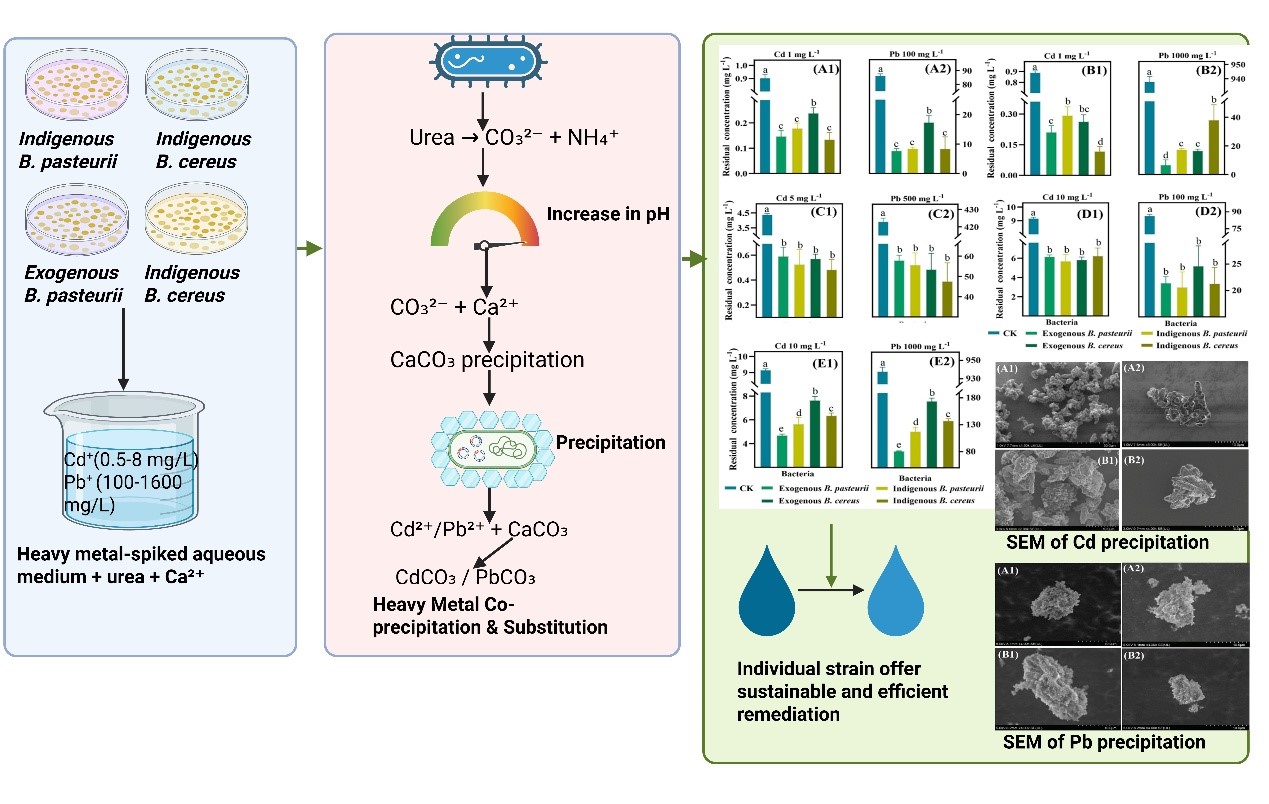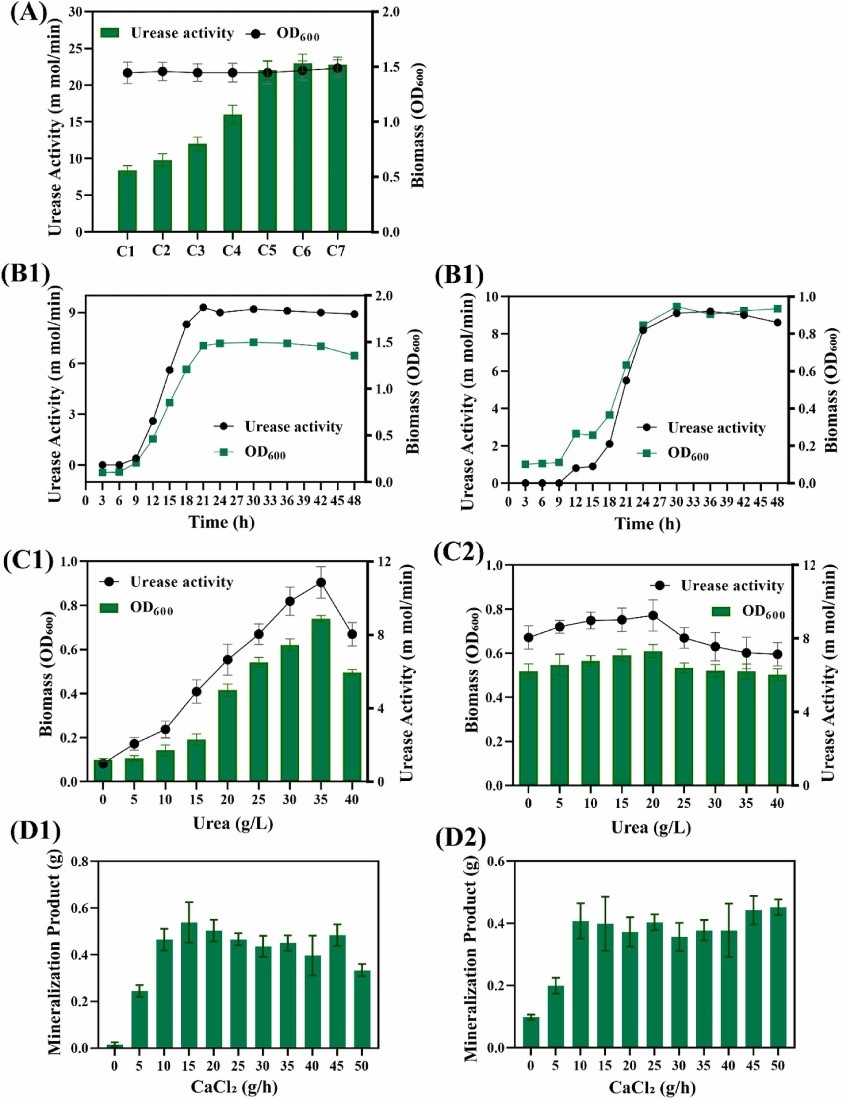Unraveling the Mechanism of Heavy Metal Biomineralization by Indigenous Bacteria
With the continuous expansion of industrialization and agricultural activities, contamination of water bodies and soils by heavy metals such as cadmium (Cd) and lead (Pb) has evolved into a severe global environmental challenge. These toxic metals are not only persistent in the environment and highly bio-toxic, but also readily bioaccumulate through the food chain, posing serious threats to ecosystem stability and agricultural product safety. Among the various green and sustainable in-situ bioremediation technologies, Microbially Induced Carbonate Precipitation (MICP) has garnered significant attention due to its environmental friendliness, relatively low cost, and potential for long-term stability. In actual contaminated sites, heavy metals like Cd and Pb often coexist, potentially giving rise to complex interactions such as synergy, antagonism, or competitive inhibition. These interactions profoundly influence microbial activity, mineralization efficiency, and ultimately, the stability of the remediation outcome. Ignoring this complex scenario and relying solely on technologies optimized for single-pollutant systems would likely lead to poor performance in practical applications. Therefore, in-depth exploration of the efficiency and microscopic mechanisms of MICP technology under Cd-Pb co-contamination conditions is of paramount practical significance for the precise remediation of complex contaminated sites.
This study successfully isolated two indigenous mineralizing bacterial strains—Bacillus pasteurii and Bacillus cereus—from typical contaminated soils in northern Guangdong, and conducted a systematic comparison with commercial strains. The results demonstrated that under low-concentration contamination conditions (Cd: 0.5-4.0 mg/L, Pb: 100-200 mg/L), both indigenous strains achieved immobilization efficiencies exceeding 98% for both Cd and Pb, indicating highly efficient performance. Even under higher stress conditions (e.g., Cd at 8 mg/L), the indigenous B. pasteurii maintained a high immobilization efficiency of 96%, showcasing remarkable tolerance. In environments with Cd-Pb co-contamination, competitive inhibition between the metals was observed. Due to its stronger binding affinity, Pb often dominated the immobilization process. The mineralizing bacteria induced the formation of carbonate mineral precipitates enriched with Cd or Pb, which is the key mechanism for heavy metal immobilization. The strains isolated from the contaminated site exhibited greater environmental adaptability and superior heavy metal immobilization capacity compared to exogenous commercial strains. They initiated the mineralization process more rapidly and formed more stable mineral structures, providing excellent "seed" resources for in-situ bioremediation. This work not only deepens this mechanistic understanding of the microbial mineralization process but, more importantly, offers an efficient, low-cost, and environmentally friendly solution for the practical remediation of heavy metal-contaminated water and soil.
The related research findings entitled "The Role of Mineralization Bacteria in the Immobilization of Cadmium and Lead in Aqueous Solutions." was recently published in the Journal of Hazardous Materials (IF 5-years=12.4), a leading international journal in the environmental field. Meanwhile, this have further demonstrated that indigenous mineralizing bacteria isolated from contaminated soils exhibit highly effective remediation performance in actual Cd-Pb co-contaminated farmland soils. This additional finding was published in the Chinese core journal Journal of Ecology and Rural Environment. This study was supported by the National Natural Science Foundation of China and the Guangdong Province S & T Program. Article links: https://doi.org/10.1016/j.jhazmat.2025.140187;https://doi.org/10.19741/j.issn.1673-4831.2025.0559

Figure 1. Mineralizing bacteria "capture" heavy metals in water through biomineralization. (image by ZHUANG et al)

Figure 2. Domestication process of indigenous mineralizing bacterial strains and screening of optimal culture conditions. (image by ZHUANG et al)
File Download: